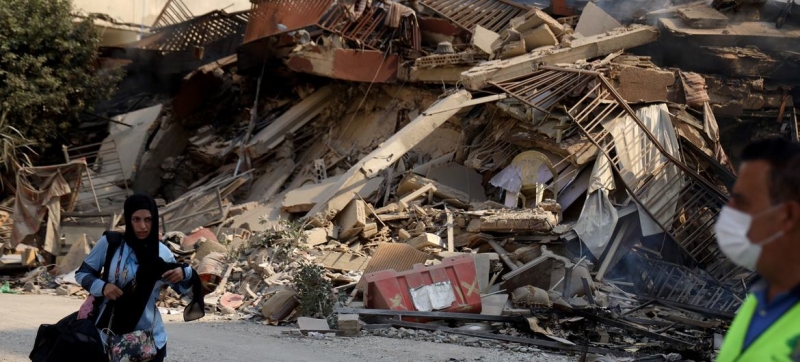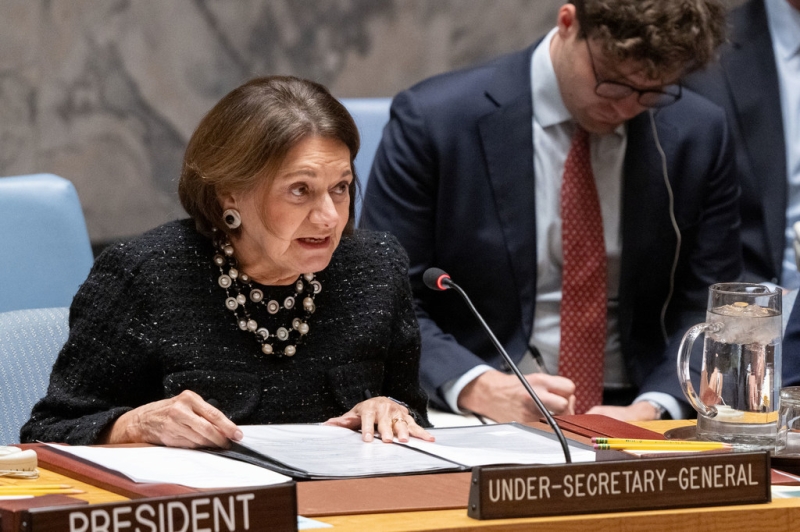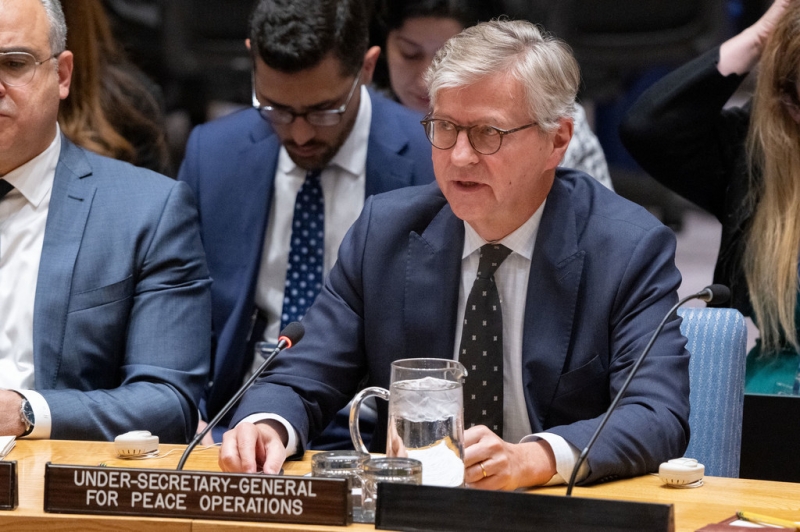
This is what the southern suburbs of Beirut look like after Israeli airstrikes. UN Security Council: More than 300 people have been killed in Lebanon in the last week alone Peace and Security
More than 300 people have been killed in Lebanon in the last week alone. Since October last year, the death toll has exceeded 2,000 people, including more than 100 children. This data was cited by UN Deputy Secretary-General Rosemary DiCarlo in her speech to the Security Council on Thursday.
She recalled that the exchanges of fire between Hezbollah and the IDF began on October 8 last year, when Hezbollah opened fire on Israeli targets in support of Hamas’s actions in Gaza. Recently, according to DiCarlo, Hezbollah has stepped up its attacks on Israel, firing rockets and drones toward Haifa and Tel Aviv.
Israel, she continued, has responded by shelling all of Lebanon, now including Hezbollah-linked targets in Beirut. Many of these targets are in densely populated areas, so the attacks have caused widespread destruction and displacement. Six hundred thousand people have fled their homes in Lebanon, 250 thousand of them in the last week alone. The overwhelming majority of the migrants are women and children.
A quarter of Lebanon is under “evacuation orders,” the UN spokeswoman said, with people often given just two hours’ warning of bombings before they are due to strike.
In northern Israel, civilians have also been repeatedly targeted by Hezbollah and other non-state armed groups in Lebanon and the region.
More than 50 people have been killed and more than 60,000 displaced in Israel and the Israeli-occupied Golan Heights since October last year.

UN Deputy Secretary-General Rosemary DiCarlo.
The region teeters on the brink of all-out war
“The devastating conflict in Lebanon, coupled with the escalating attacks in Syria and the raging violence in Gaza and the occupied West Bank, indicates that the region is teetering dangerously on the brink of all-out war,” Rosemary DiCarlo warned.
She called on Hezbollah to stop shelling Israel and Israel to stop its military actions. “The parties must use the diplomatic options in front of them, not the weapons next to them,” she stressed.
“As the Secretary-General has warned, there is still time, but it is running out fast. We must give diplomacy a chance. Now,” DiCarlo added.
The UN insists that the parties must return to the cessation of hostilities and comply with the provisions of Security Council resolutions 1559 (2004) and 1701 (2006).
In addition, as DiCarlo emphasized, the Lebanese state must have control over all weapons on its territory. “We see what happens when this is not the case,” she said. “The political impasse over the presidential election has continued for almost two years. In this time of crisis, I have repeatedly called on Lebanon’s political leaders to take decisive steps to fill the vacuum. The state sovereignty and territorial integrity of both Lebanon and Israel must be respected.”

Under-Secretary-General for Peacekeeping Operations of the United Nations Jean-Pierre Lacroix.
Most of southern Lebanon is uninhabitable
Most of southern Lebanon is currently uninhabitable and is becoming increasingly uninhabitable. This was stated by UN Under-Secretary-General for Peacekeeping Operations Jean-Pierre Lacroix, speaking at a Security Council meeting.
Israel’s stated goal is the return of residents to their communities in the north of the country, he recalled. Hezbollah continues to fire across the Blue Line and is currently threatening major Israeli population centers, including Haifa, with increasingly high-caliber weapons. This is a clear and blatant demonstration of the presence of unauthorized armed personnel, equipment and weapons south of the Litani River, which is a gross violation of Resolution 1701, the deputy head of the UN noted.
Since September 23, with the launch of the IDF’s Operation Northern Arrows, and as of October 8, UN peacekeepers have recorded 5,451 rocket and projectile trajectories from south to north of the Blue Line and 1,385 trajectories from north to south.
“It is noteworthy,” said Jean-Pierre Lacroix, “that each trajectory can be the trail of several munitions at once. In addition, peacekeepers cannot detect shells fired from portable anti-tank launchers or light artillery.”
Since October 1, fierce clashes have taken place in southern Lebanon, resulting in the death of at least 12 Israeli soldiers and dozens of Hezbollah fighters. UNIFIL troops observed incursions by Israeli infantry, Merkava tanks and engineering vehicles in both Sector West and Sector East.
Read also:
EXPLAINING | Security Council Resolution 1701, the Blue Line and UNIFIL
Shitting of peacekeepers’ positions
The clashes since October 8 have been accompanied by fire from tanks and small arms fire, airstrikes, Iron Dome interceptions and multiple explosions. Two peacekeepers were wounded when a tank shelled an observation post at UNIFIL headquarters in Naqoura. In addition, the UN deputy chief said, on Thursday morning IDF soldiers fired at peacekeepers’ positions from a hole in a fence they had made the day before during adjacent excavation work. Several vehicles and a communications system were damaged.
The day before, on Wednesday, another UN position was shelled, damaging a lighting system and a radio relay station. A year ago, this position served as a venue for trilateral meetings on the border, Jean-Pierre Lacroix noted. The commander of the peacekeeping forces on the Blue Line, according to him, expressed a strong protest to the IDF leadership in connection with these actions.
“The safety of the peacekeepers is currently under threat,” the UN deputy chief concluded. “The actions described above demonstrate disregard for the principle of unconditional protection provided to UN premises and personnel in accordance with international law.”
